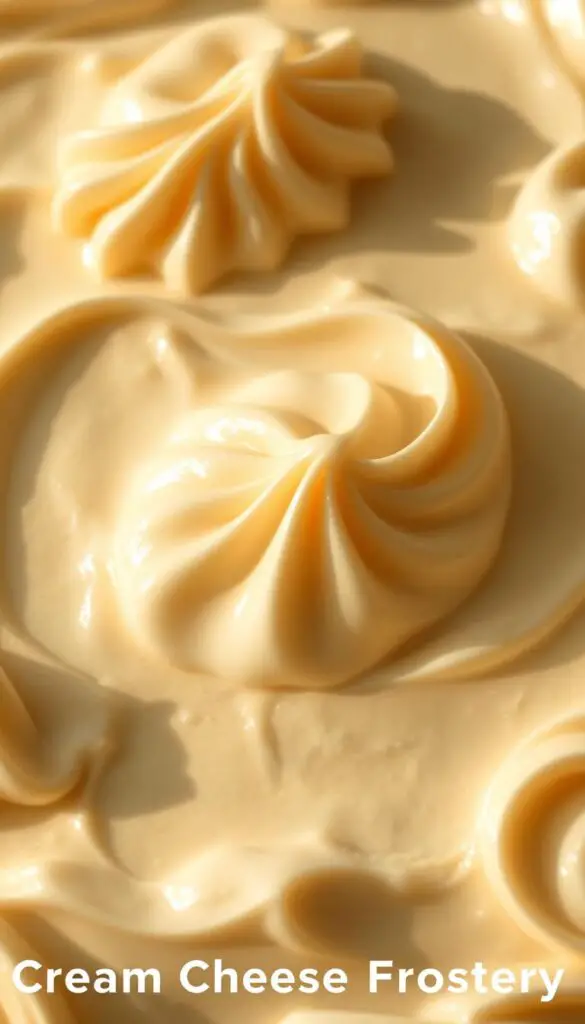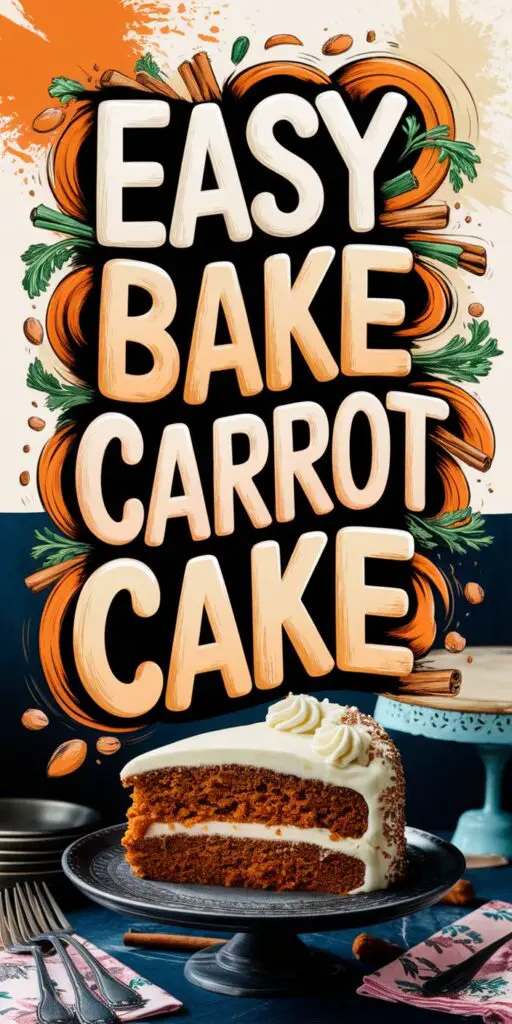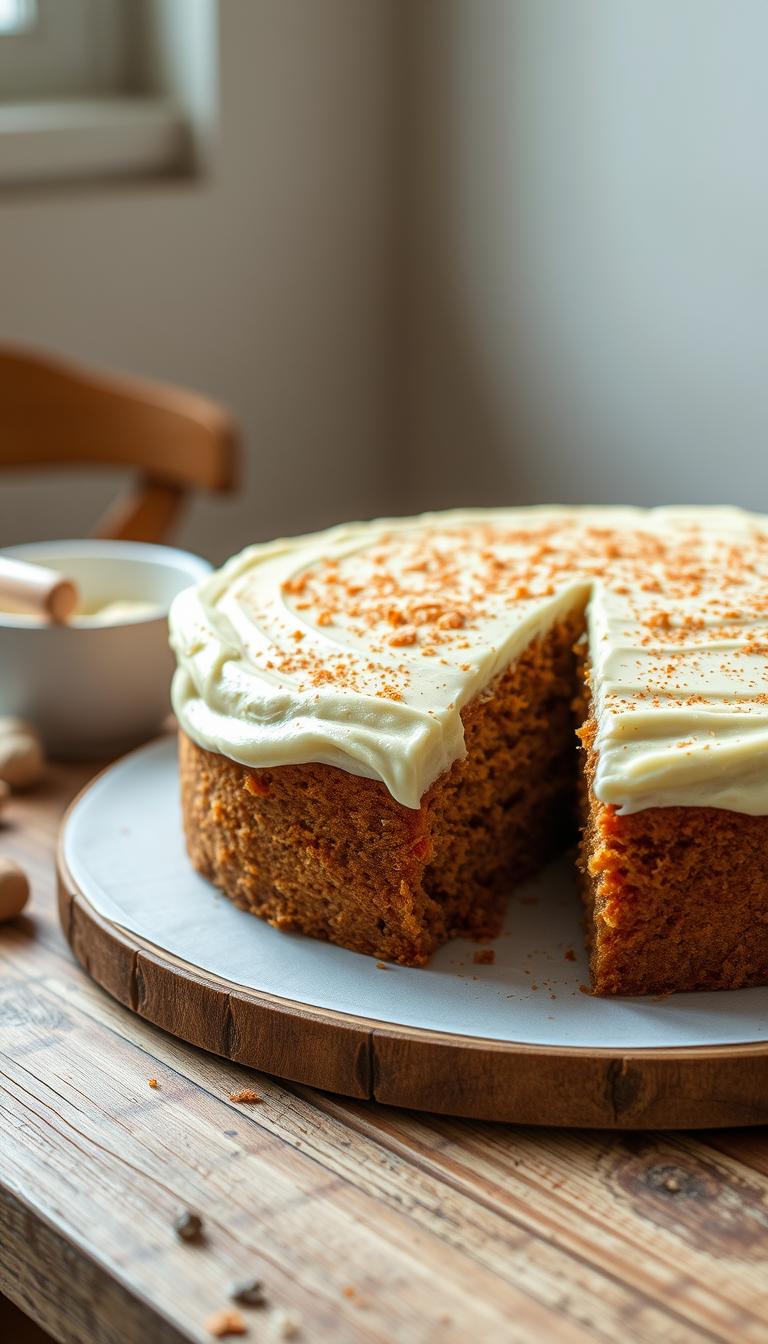I’ll never forget the first time I brought this home made dessert to a family potluck. My cousin – who swore she hated “vegetables in sweets” – took one bite, paused, and asked for a second slice. That’s the magic of a well-made carrot cake: it turns skeptics into believers.
Over the years, I’ve refined my approach to create what friends now call “the best carrot cake they’ve ever tasted”. The secret? Using freshly shredded carrots for natural sweetness and swapping white sugar for brown to deepen the flavor. A splash of vanilla extract and a dash of cinnamon in the batter make every bite feel like a warm hug.
Preparation is key. I always preheat the oven first – it ensures even baking. Combining the dry ingredients (flour, baking soda, salt) in one large bowl and wet ingredients (oil, eggs, vanilla) in another creates the perfect base. Fold in those vibrant orange shreds gently – overmixing leads to dense layers.
My pro tip? Line your cake pans with parchment paper. When the toothpick comes clean after 35 minutes, you’ll thank me for the easy release. Let’s dive into the step-by-step process that yields a tender crumb and that iconic tangy cream cheese frosting everyone craves.
Key Takeaways
- Freshly shredded carrots and brown sugar enhance natural sweetness
- Proper oven preheating ensures even baking
- Separate mixing of dry and wet ingredients creates ideal texture
- Parchment paper prevents sticking for flawless layer release
- Cream cheese frosting balances spice with creamy tang
Introduction and Recipe Overview
Easter dinner wasn’t complete until Aunt Margie demanded my secret ingredient list. That moment cemented this dessert’s status as our family’s celebration staple. Its magic lies in how the warm spices dance with velvety cream cheese frosting – a combination that turns casual gatherings into cherished traditions.
Why This Dessert Wins Hearts
What makes this recipe unforgettable? The texture. Freshly grated carrots create pockets of moisture, while cinnamon and nutmeg add depth without overpowering. I’ve watched neighbors who “don’t do sweets” sneak third helpings at block parties, their fingers swiping every last crumb from paper plates.
Versatility Meets Reliability
Whether it’s a birthday brunch or church bake sale, this dessert adapts. The batter comes together in one large bowl – no fancy equipment needed. I’ve baked it in sheet pans for crowds and crafted elegant layer cakes for anniversaries. Pro tip: Toast walnuts right in the preheated oven while mixing dry ingredients. That nutty aroma? Pure kitchen alchemy.
Over twelve years of tweaking, I’ve discovered two non-negotiables: real vanilla extract in the batter and full-fat cream cheese for frosting. These choices transform good into extraordinary. Now, let’s explore how simple techniques yield spectacular results every time.
Essential Ingredients for a Moist Carrot Cake
My neighbor once asked why her version tasted like spiced cardboard. The answer? Ingredient choices matter more than you think. Every component plays a role in creating that signature tender crumb and cozy aroma.

Quality Ingredients and Creative Substitutions
Brown sugar beats white sugar here – its molasses content locks in moisture. I use light brown for subtle sweetness, but dark brown adds deeper flavor. For oil, neutral options like avocado or vegetable work best. Want to reduce fat? Swap half the oil with unsweetened applesauce.
Crushed pineapple (drained!) adds natural sweetness and acidity. Mashed banana works too, but reduce other wet ingredients slightly. Always use freshly shredded carrots – store-bought shreds are too dry and woody.
| Substitution | Effect | Best For |
|---|---|---|
| Applesauce | Lighter texture | Low-fat versions |
| Pineapple | Extra moisture | Tropical flavor twist |
| Banana | Denser crumb | Nut-free recipes |
Freshly Shredded Carrots and Perfect Spices
Grate carrots just before mixing – their natural juices hydrate the dry ingredients. Medium shreds blend seamlessly into the batter without stringiness. For spices, I mix cinnamon, ginger, and a pinch of cloves. Too much nutmeg can overpower – measure carefully!
Always sift baking soda with flour to prevent bitter clumps. Combine wet and dry mixtures in a large bowl using folding motions. Overmixing activates gluten, turning your dessert into bread. Trust me – gentle hands make cloud-soft layers.
Step-by-Step Instructions & Preparation Tips
Baking becomes magic when you nail the basics. Let me walk you through the techniques that transformed my early kitchen disasters into foolproof results.
Mixing the Batter with Dry and Wet Ingredients
Start by whisking oil, eggs, and vanilla extract in a large bowl until golden ribbons form. I use room-temperature eggs – they blend better. In another bowl, sift flour, baking soda, and spices to eliminate clumps.
Combine wet and dry mixtures using a spatula. Fold in grated carrots like you're tucking in a baby – gentle strokes prevent toughness. Add toasted pecans last for crunch. Overmixing? That's the enemy of fluffy layers.
Preheating, Toasting Pecans, and Oven Timing
Set your oven to 300°F first – perfect for toasting nuts. Spread pecans on a baking sheet in a single layer. Bake 7 minutes until fragrant. Cool completely before chopping.
Boost temperature to 350°F for the batter. Different pans need adjustments:
| Pan Type | Bake Time | Doneness Test |
|---|---|---|
| 9-inch Round | 28-32 min | Toothpick clean |
| 9×13 Sheet | 35-38 min | Springy center |
| Bundt | 45-50 min | Edges pull away |
Line pans with parchment paper – no sticking, no fuss. Rotate pans halfway for even browning. Let layers cool 15 minutes before frosting with cream cheese mixture. Patience rewards you with perfect slices every time.
Carrot Cake's Cream Cheese Frosting Mastery
The moment I realized frosting could make or break a dessert came during my first bake sale disaster. My runny topping slid off the layers like melted ice cream. Now? Friends beg me to frost their birthday treats. Let’s transform your kitchen into a pastry studio.

Crafting the Cream Cheese Frosting from Scratch
Start with brick-style cream cheese – no tubs allowed. Soften it with unsalted butter (2:1 ratio) until they hug the spoon. Sift confectioners’ sugar to avoid gritty surprises. Add vanilla extract slowly – it’s the flavor conductor.
Beat the mix on medium until ribbons form. Too stiff? A teaspoon of milk saves the day. For piping swirls, chill the frosting 20 minutes. It firms up just enough to hold sharp peaks without losing silkiness.
Tools and Techniques for a Smooth Finish
An electric mixer beats air pockets into submission. Use a spatula to scrape the bowl’s sides – hidden lumps love to hide there. Spread frosting with a bench scraper for bakery-style edges. Rotate your stand while smoothing – it’s like a lazy Susan magic trick.
| Tool | Purpose | Pro Tip |
|---|---|---|
| Offset Spatula | Even layers | Warm blade in hot water for glossy finish |
| Piping Bag | Decorative borders | Use tip 1M for classic swirls |
| Rotating Stand | Smooth coating | Spin clockwise for control |
Balance is key. Tangy cheese should dance with sweet sugar, not wrestle. Taste as you go – adjust sugar in half-tablespoon increments. Your final swipe should leave the spatula clean. That’s the golden standard.
Cooking Techniques and Key Baking Tips
My kitchen counter once held three identical pans – all producing wildly different results. That experiment taught me how pan choice shapes texture and bake time. Let’s explore how to set yourself up for success before the oven even dings.
Choosing the Right Cake Pans and Lining with Parchment
Metal pans conduct heat better than glass, creating golden edges. For even layers, use light-colored aluminum. Dark pans? They absorb more heat – reduce oven temp by 25°F. Always check pan depth: shallow ones cause overflow, while deep pans extend baking time.
Cut parchment paper circles using your pan’s bottom as a stencil. Brush melted butter under the paper – it acts like glue. This trick prevents sliding during pouring. For sheet pans, leave 2-inch overhangs on the long sides. They become handy handles for lifting cooled layers.
| Pan Type | Best For | Prep Tip |
|---|---|---|
| 9-inch Round | Layered cakes | Double-line sides |
| 9×13 Sheet | Large gatherings | Reinforce corners |
| Bundt | Decorative shapes | Grease crevices |
Bake times vary by pan material and size. Start checking 5 minutes early for dark pans. Insert a toothpick near the center – moist crumbs mean done. Let layers cool 10 minutes before transferring to racks. Rushing this step? That’s how crumbs end up in your cream cheese frosting.
Pro tip: Label pans with masking tape. Note each one’s quirks like “bakes fast” or “needs rotation.” Your future self will thank you during hectic baking days.
Carrot Cake: Secrets to Ultimate Flavor and Texture
One rainy afternoon, a baking experiment revealed how oil and sugar work together to create the perfect crumb. The magic happens when ingredients harmonize like musicians in an orchestra – each element playing its part without overpowering others.
Balancing Spices, Sugars, and Oils
Cinnamon acts as the lead singer here – warm and inviting. Ginger adds a bright backbeat, while nutmeg whispers depth. A pinch of cloves? That’s the unexpected guitar solo that makes taste buds cheer. Too much of any spice throws off the whole band.
Brown sugar’s molasses content is your moisture maestro. I mix light and dark varieties for layered sweetness. Oil keeps the batter tender – neutral types let other flavors shine. For a healthier twist, replace half the oil with applesauce. Just don’t skip the vanilla extract – it’s the glue binding all these flavors.
Moisture Retention and Make-Ahead Strategies
Pull layers from the oven when a toothpick shows moist crumbs – not completely clean. This residual heat finishes baking without drying. Wrap cooled cakes in plastic while slightly warm. The steam softens the crumb further.
Assembling the dessert a day ahead lets spices mingle. Frost with cream cheese mixture, then refrigerate under a cake dome. Cold storage firms up the texture without sacrificing tenderness. Bring it to room temperature before serving – that’s when flavors truly sing.
For long-term storage, freeze unfrosted layers up to 3 months. Thaw overnight in the fridge, then frost fresh. Your future self will praise your planning when unexpected guests arrive.
Conclusion
There’s a reason this recipe converts even the most stubborn dessert critics. With freshly shredded carrots and balanced spices, each bite delivers cozy warmth and moist texture. The magic lies in simplicity – mix dry and wet ingredients separately, fold gently, and let your preheated oven work its alchemy.
Whether you’re baking for birthdays or Tuesday cravings, this treat adapts beautifully. Swap nuts for coconut, or try muffin tins for portable portions. Just remember: proper prep ensures success. Measure spices carefully, line pans with parchment, and test doneness at 35 minutes.
That luscious cream cheese frosting? It’s the crowning glory. Spread it thick between tender layers or pipe swirls for special occasions. Share slices at potlucks or savor them with afternoon coffee – every moment becomes sweeter.
This dessert holds a special place in my kitchen. It’s transformed skeptics into fans and ordinary days into celebrations. Now it’s your turn. Whip up a batch, then watch smiles bloom as friends taste that first spiced, creamy bite.
FAQ
Can I substitute oil with applesauce in the batter?
Yes! I often swap half the oil with unsweetened applesauce for a lighter texture. Just keep the total liquid amount the same to maintain moisture.
How do I prevent my cream cheese frosting from becoming runny?
Always use full-fat Philadelphia cream cheese and softened butter—never melted. Chill the frosting for 15 minutes before spreading if your kitchen is warm.
Do I need to toast the pecans for the topping?
Toasting adds depth, but it’s optional. If you’re short on time, raw nuts work. Just chop them finely for better texture distribution.
Why does my dessert sometimes sink in the middle?
Overmixing the batter or opening the oven too early can cause this. Fold dry ingredients gently and use an oven thermometer to check temperature accuracy.
Can I make this recipe ahead for a party?
Absolutely! Bake the layers 1-2 days in advance, wrap them tightly in plastic, and frost day-of. The flavors actually deepen overnight.
What’s the best way to shred carrots for maximum moisture?
I hand-grate them using the medium holes on a box grater. Pre-shredded bags are convenient but often too dry—fresh is worth the effort!
Can I freeze leftover portions?
Yes! Slice individual pieces, wrap in parchment paper, and store in airtight containers for up to 3 months. Thaw in the fridge before serving.
Will this work in a 9×13 pan instead of round pans?
Definitely. Adjust baking time to 35-40 minutes. Use a toothpick test—it should come out clean with a few crumbs attached.



